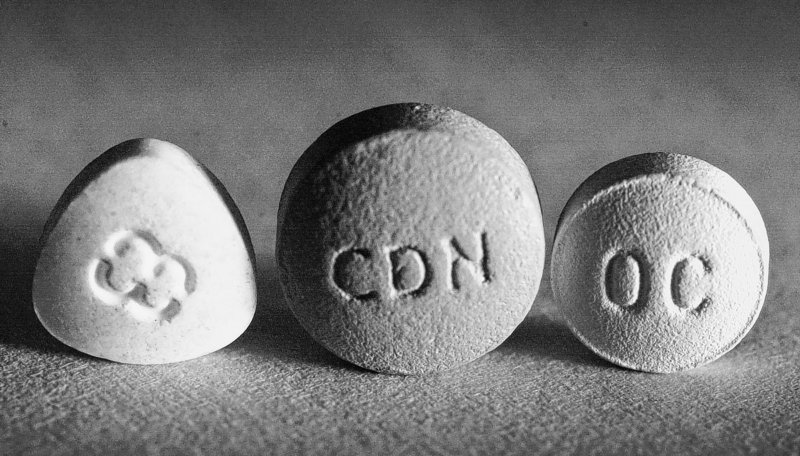Janice Reynolds wrote clearly and credibly about the true pain epidemic (“‘Addiction epidemic’ is media driven, but there is a true pain epidemic,” April 20).
Last fall, I made the same point to the reporter who authored the Press Herald series on painkiller abuse, and to the two state task forces on this issue — the attorney general’s and the legislative committee.
I shared with all of them the executive summary of the Institute of Medicine’s June 2011 report that Ms. Reynolds cites and that she points out was never mentioned in the media. Its opening paragraph says: “Chronic pain affects an estimated 116 million American adults — more than the total affected by heart disease, cancer and diabetes combined. Pain also costs the nation up to $635 billion each year in medical treatment and lost productivity.”
Her writing expresses compassion, knowledge and hands-on nursing skill for those of our loved ones who suffer pain that we can only imagine. Her perspective comes from in-depth study and practice of conventional medicine, while mine comes from teaching and practicing Reiki (a holistic treatment), treating emergency patients as an EMT and transporting methadone patients to their daily clinics. I’ve seen a lot of people in pain, most of whom do not fit the stereotype of “addict” or “drug seeker” that we fear and condemn.
Where does all this pain come from? What is to be done about it? This is the larger context of the painkiller abuse issue, and these questions urgently need discussion and awareness of effective treatment.
The efforts that focus only on monitoring and enforcement will barely scratch the surface of the problem.
Jeffrey Hotchkiss
Yarmouth
LePage, Legislature seem intent on attacking poor
I am disgusted with the governor and Legislature. They have managed to attack low-income people, organized labor, especially low-wage earners — egg farm workers and child-care providers — unemployed workers and people receiving workers compensation for injuries suffered in many cases in unsafe working conditions.
What will they do when we are all gone? When we are all gone and there is no one left to work in the state, will the 1 percent that is left still have their millions? Will they still be creating jobs if there is no one left to fill them?
I only hope the 99 percent realize what has happened with this administration and wake up in time to vote out those legislators who supported the governor’s regressive politics and help Maine to move forward again. “Open for business” does not have to mean “closed to the poor and working class.”
Kathleen Kadi
Portland
Restore labor mural and balance with a second one
Having spoken out on the rights of workers and the need of justice in the workplace, I am dismayed at the needless ongoing antagonism surrounding Gov. LePage’s removal of the mural depicting Maine’s working men and women.
On one hand, the controversy focuses on whether or not the artwork displays working people or promotes some hidden agenda. On the other hand, heated exchange focuses on the governor’s right to remove the mural and what his real agenda might be.
Is there another path to resolve this overly heated controversy? Catholicism promotes a rule of viewing the world as “both/and” more often than “either/or.” This rule attempts to hold in balance what appears oppositional and promotes creative resolutions to seemingly intractable problems. Here is an attempt to use that rule with this issue.
What if the workers’ mural is restored and another mural is added focusing on Maine’s entrepreneurial leaders? Such examples might include L.L. Bean and the retail business; Bath Iron Works and the manufacturing industry; health care systems (including three Catholic hospitals); banking and finance; tourism, restaurants and recreational businesses.
This additional mural might remind us that while businesses and labor interests are often adversarial, they need not be inherently so. Both murals can remind us that dialogue and a disarmed listening heart can create a common ground to promote the common good. We are more interdependent than adversarial.
We are engaging in an election year already inundated with paranoid, vile, hyperbolic and bitter verbiage. The fall campaigns promise more of the same and worse. By approaching issues from a “both/and” rather than an “either/or” vision, we begin to see the good in those with whom we disagree.
Begin with the murals and let that be the start of a new and creative way to build civil discourse.
Rev. Michael Seavey
Portland
Reader fears paper will be influenced by ownership
I think there should be a law against a politician owning a newspaper (especially during office). The Portland Press Herald has long been known to be a left-leaning news media, but now it is owned by S. Donald Sussman, the husband of “proud progressive liberal” Chellie Pingree. I’m sure all dissenting voices will be silenced in this newspaper, and I am appalled.
This smacks of Marxism and totalitarianism. I have already heard the Portland Press Herald referred to as the new “Pravda!”
I think Americans are too smart for such tactics and will show their displeasure by looking elsewhere for their news.
Mary Jane Newell
Oxford
Send questions/comments to the editors.



Success. Please wait for the page to reload. If the page does not reload within 5 seconds, please refresh the page.
Enter your email and password to access comments.
Hi, to comment on stories you must . This profile is in addition to your subscription and website login.
Already have a commenting profile? .
Invalid username/password.
Please check your email to confirm and complete your registration.
Only subscribers are eligible to post comments. Please subscribe or login first for digital access. Here’s why.
Use the form below to reset your password. When you've submitted your account email, we will send an email with a reset code.